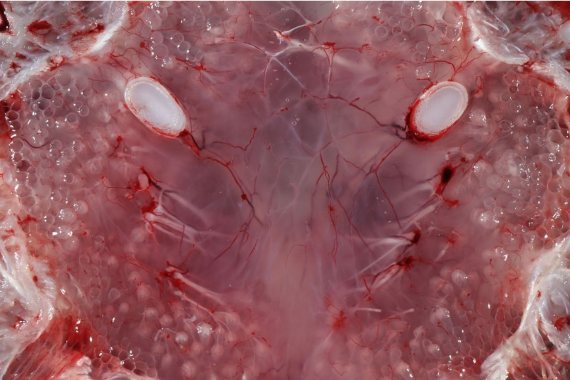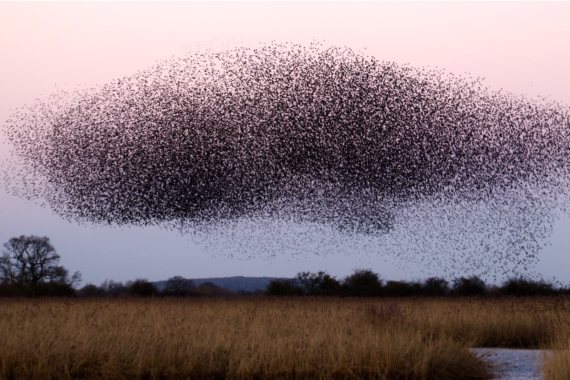In 1949, Albert Einstein replied to a letter from a British naval engineer named Glyn Davys. Although Davys’ missive has not survived, the German physicist’s letter has. In it, Einstein referred to the research of the German-Austrian Nobel laureate Karl von Frisch, who pioneered the study of the sensory perception of bees and who discovered the ability of these insects to be guided by the Earth’s magnetic field. “It is thinkable that the investigation of the behaviour of migratory birds and carrier pigeons may someday lead to the understanding of some physical process which is not yet known,” wrote Einstein. And indeed, he was right: not only birds, but a multitude of other species also possess a magnetic sixth sense. However, three quarters of a century later there are still many unknowns; one of them, perhaps the most intriguing, is whether we humans also have this ability without knowing it.
When Von Frisch proposed in 1927 that the dance of honeybees informed their fellow of the distance and direction to a remote food source, his theory was met with scepticism, as it seemed too sophisticated a language for such humble beings. Time and science proved him right, and today we know that bees hide even more surprising capabilities. But beyond the significance of the dance, von Frisch’s findings implied that bees could also orient themselves in the dark, using the amazing power of detecting the magnetic field of the Earth.
In fact, the possibility that some animals could sense our planet’s magnetism had been hypothesised since the previous century. In 1859, the zoologist Alexander von Middendorff was the first to suggest that the mystery of how migratory birds managed to find their way could perhaps be explained by an unknown ability to detect geomagnetism. In 1882, the French zoologist Camille Viguier attributed to the semi-circular canals of the ear—the organ of spatial orientation—a sensitivity to the Earth’s magnetic field that enabled dogs and other animals, including humans, to return to a specific known location.
Ampullae sensitive to electric fields
It was in the second half of the 20th century that science began to find its way to demonstrate magnetoreception in animals. At that time, it was discovered that birds not only oriented themselves by the Sun, but also possessed a kind of internal compass. In 1966, this ability was demonstrated in the European robin, and studies describing this magnetic sensitivity in many other species began to follow. Today this power is considered to be widespread in the animal world: from the modest Caenorhabditis elegans, a tiny one- millimetre nematode worm that lives in the soil and is widely used in laboratories as a model organism, the list of magnetosensitive animals includes arthropods, molluscs, fish, amphibians, birds and mammals. In short, it seems so common in nature that it is inevitable to ask: what about us?

The problem is that magnetoreception is still a sense shrouded in great mystery to science. If one thing seems clear, it is that it can come in many forms. Cartilaginous fish such as sharks and rays have organs called the ampullae of Lorenzini, which are sensitive to electric fields, but can also detect magnetic fields by induction, the working principle of transformers or electric motors. On the other hand, salmon and other fish have cells with particles of magnetite (an iron oxide) that orient themselves according to the geomagnetic field, and which could hold the key to the ability of these fish to return to spawn in the same river in which they were born. Magnetite in the abdomen of honeybees also appears to be responsible for their magnetic navigation, and a similar mechanism may also be used by sea turtles in their migrations and to find the sea after emerging from their eggs on the beach. On the other hand, it has been proposed that it could be magnetic bacteria that confer this sixth sense to the animals in whose bodies they live in symbiosis.
The magnetic compass of animals
Even more astonishing is the mechanism discovered in birds: photoreceptor cells in their retina possess pigments called cryptochromes that respond to magnetism by a quantum phenomenon called radical pairs, which biophysicist Klaus Schulten first proposed in 1978 as an explanation for the compass of animals. Blue light excites an electron in the molecule, resulting in the formation of a pair of entangled electrons whose spins are altered by the Earth’s magnetic field, sending a signal to the optic nerve. One cryptochrome in particular that is especially sensitive to magnetism, called Cry4, is present in abundance during the migratory season of certain birds, and in a more active form than in others that do not migrate.
In 1972, Roswitha and Wolfgang Wiltschko of the Goethe University in Frankfurt showed that birds respond not only to the direction of the magnetic field and its declination— deviation from the geographic poles—but also to its inclination: the field lines dip at the magnetic poles and are horizontal at the equator, so their slope relative to the surface tells them what latitude they are at. In contrast, this system cannot distinguish between north and south polarity, unlike magnetite. Dmitry Kishkinev at Keele University and Richard Holland at Bangor University (UK) have described how the Eurasian reed warbler, a migratory bird of Eurasia and Africa, uses this set of magnetic guides like a GPS system to create a global map in the same way that humans do with our coordinate system.

Thus, “analyses of the functional characteristics clearly show that the magnetic compass is not uniform among vertebrates,” Roswitha Wiltschko summarises for OpenMind. But while this may lead to the idea that the different mechanisms are well distributed among the different branches of the animal kingdom, this does not seem to be the case: birds have magnetite in their upper beaks, and amphibians and sea turtles also have magnetic field-tilting compasses; but as Wiltschko explains, “while that of birds needs light from UV to green, that of amphibians requires light from UV to blue, and that of turtles does not require light at all.”
More work has been done on the magnetite compass hypothesis in fish and mammals such as bats and mice, but mammals also possess cryptochromes: Cry1 is present in the retina of dogs, wolves, foxes, bears and other carnivores, and in primates such as orangutans and macaques, but not in humans. And while this does not prove that such animals are magnetosensitive, there are indications that many are; for example, dogs prefer to defecate aligned with the north-south axis, and have been shown to generally use magnetism to find their way, as Viguier anticipated.
Moreover, as Kishkinev told OpenMind, “there are even more hypotheses than these, at least one about magneto-electrosensitive cells in the semi-circular canals of birds,” as also suggested by Viguier. “It is conceivable that a single species may employ more than one mechanism, enabling the detection of different components of the magnetic field depending on the available light,” she adds. In fact, Wiltschko points out, the magnetic compass and quantum compass hypotheses “do not contradict, but supplement each other. Birds have both mechanisms and use them for different tasks: their compass (sensing) magnetic directions is based on a radical pair mechanism with cryptochrome as receptor molecule, and they sense magnetic intensity by a mechanism based on magnetite.”
Human magnetoreception
And in the face of all this, where do we Homo sapiens stand? The truth is that we are also equipped with a cryptochrome, Cry2. Experiments have shown that normal human cells are sensitive to the magnetic field, and that Cry2, present in our retina, also exhibits light-dependent magnetosensitivity. These clues support the efforts of some scientists to show that we are not an exception among many other species and that we also react to geomagnetism, a hypothesis that has been controversial for decades since the so-called Manchester experiments of 1980, in which Robin Baker showed how people were able to orient themselves blindfolded except when wearing bar magnets attached to their heads. But other experiments over the years have been inconclusive.

In 2019, Joseph Kirschvink and his collaborators at the California Institute of Technology provided what they say is the first neuroscientific proof of human magnetoreception, showing that stimulation by the Earth’s magnetic field induces a change in the alpha waves of our brain similar to that seen in the processing of sensory signals. Kirschvink observed that this response is sensitive to north-south polarity, which in his opinion “rules out free-radical quantum compass mechanisms like the cryptochrome hypothesis, which can detect only axial alignment.” Instead, he favours a system based on magnetite, a mineral that is present in several regions of the human brain. What’s more, Kirschvink argues that this ferromagnetism can explain bird behaviour without the need for cryptochromes, and he is not the only scientist who still questions the role of these molecules in the magnetic sense of birds.
However, “the problem is that humans normally cannot consciously sense the magnetic field,” Wiltschko concludes. Which means that, even if we do, it may be of little use to us in general. Unless, that is, scientific understanding of how to stimulate this sixth sense could give us back what our evolution may have forgotten.
Comments on this publication